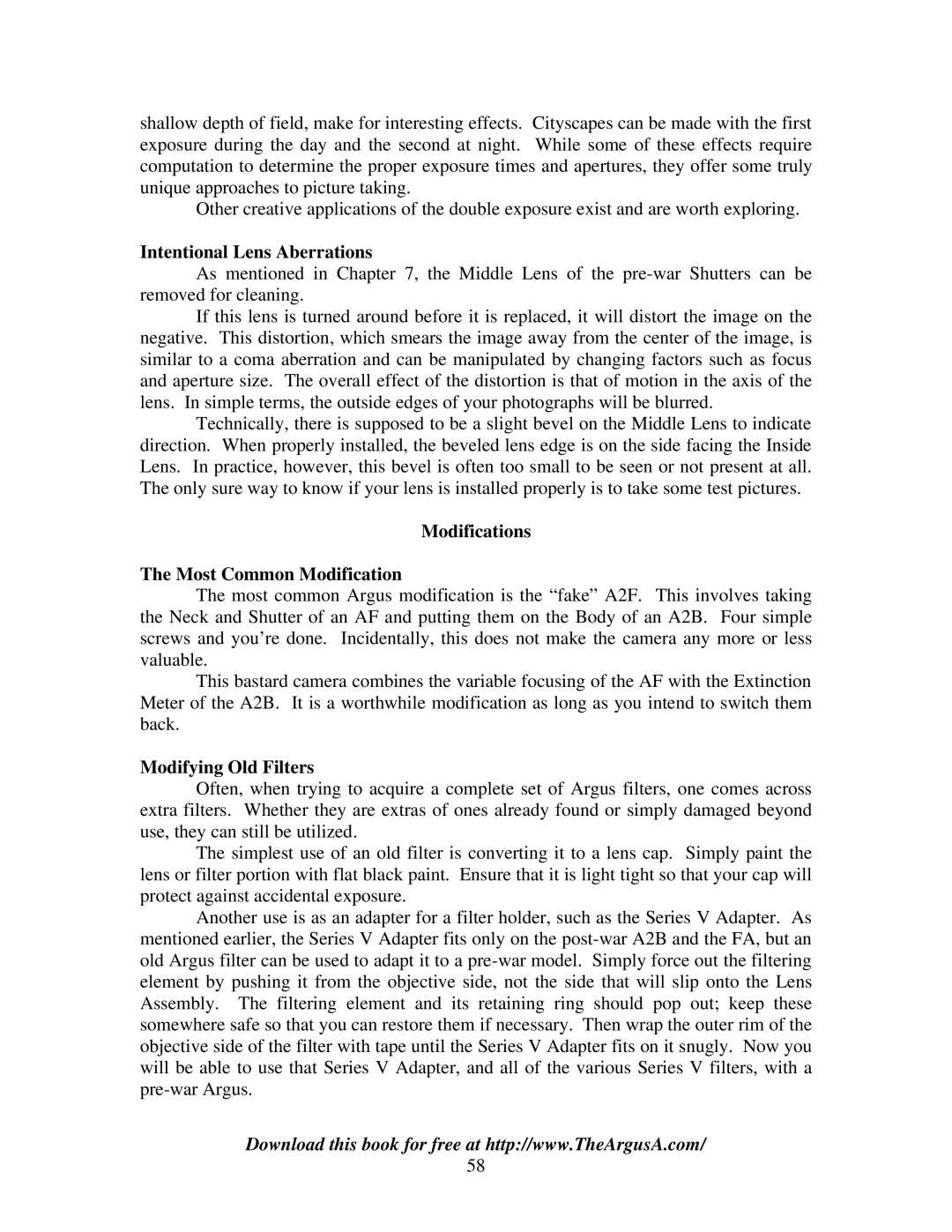shallow depth of field, make for interesting effects. Cityscapes can be made with the first exposure during the day and the second at night. While some of these effects require computation to determine the proper exposure times and apertures, they offer some truly unique approaches to picture taking.
Other creative applications of the double exposure exist and are worth exploring.
Intentional Lens Aberrations
As mentioned in Chapter 7, the Middle Lens of the
If this lens is turned around before it is replaced, it will distort the image on the negative. This distortion, which smears the image away from the center of the image, is similar to a coma aberration and can be manipulated by changing factors such as focus and aperture size. The overall effect of the distortion is that of motion in the axis of the lens. In simple terms, the outside edges of your photographs will be blurred.
Technically, there is supposed to be a slight bevel on the Middle Lens to indicate direction. When properly installed, the beveled lens edge is on the side facing the Inside Lens. In practice, however, this bevel is often too small to be seen or not present at all. The only sure way to know if your lens is installed properly is to take some test pictures.
Modifications
The Most Common Modification
The most common Argus modification is the “fake” A2F. This involves taking the Neck and Shutter of an AF and putting them on the Body of an A2B. Four simple screws and you’re done. Incidentally, this does not make the camera any more or less valuable.
This bastard camera combines the variable focusing of the AF with the Extinction Meter of the A2B. It is a worthwhile modification as long as you intend to switch them back.
Modifying Old Filters
Often, when trying to acquire a complete set of Argus filters, one comes across extra filters. Whether they are extras of ones already found or simply damaged beyond use, they can still be utilized.
The simplest use of an old filter is converting it to a lens cap. Simply paint the lens or filter portion with flat black paint. Ensure that it is light tight so that your cap will protect against accidental exposure.
Another use is as an adapter for a filter holder, such as the Series V Adapter. As mentioned earlier, the Series V Adapter fits only on the
Download this book for free at http://www.TheArgusA.com/
58
